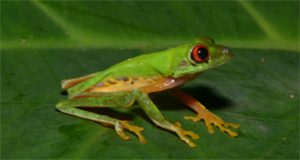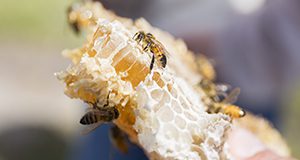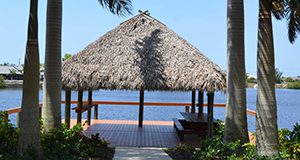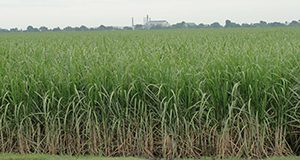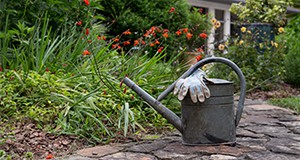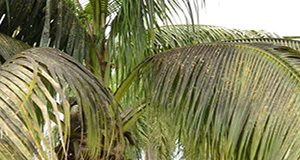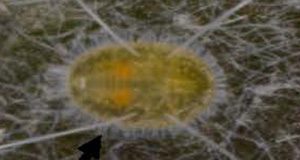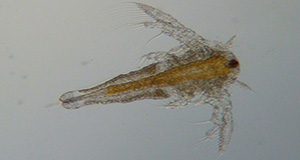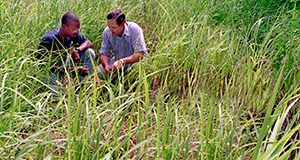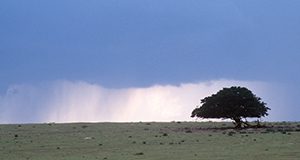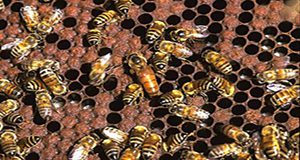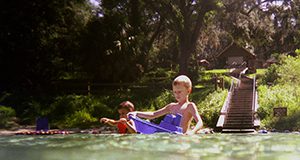Belize is home to several threatened frog species. One of them, the Maya mountains frog, lives nowhere else in the world. This 4-page fact sheet written by Jenna M. Cole, Sarah K. Cooke, Venetia S. Briggs-Gonzalez, Justin R. Dalaba, and Frank J. Mazzotti and published by the UF/IFAS Wildlife Ecology and Conservation Department will help you identify your frogs and toads in order to better protect them.
http://edis.ifas.ufl.edu/uw439
Category: Environment
Wax Moth Control
The greater wax moth (Galleria mellonella Linnaeus) and lesser wax moth (Achroia grisella Fabricius) are major pests of honey bee colonies in Florida. The best defense against wax moths in living colonies is keeping colonies otherwise strong, free of diseases and pests, and queenright. Controlling wax moths in stored combs and equipment, however, can be more difficult. This 3-page fact sheet written by Cameron J. Jack and Jamie D. Ellis and published by the UF/IFAS Department of Entomology and Nematology details the steps beekeepers can take to control wax moths and keep them from ruining stored honey bee combs and equipment.
http://edis.ifas.ufl.edu/aa141
Caterpillar Pests of Tiki Huts and Other Thatched Structures
Two species of caterpillars that eat dried sabal palm leaves have been causing problems with thatched structures. If you’ve got a chickee or are planning to get one, you can take steps to protect the thatch. Learn how to identify and manage the two caterpillar pests in this 4-page fact sheet written by Stephen H. Brown and Lyle J. Buss and published by the UF/IFAS Entomology and Nematology Department.
http://edis.ifas.ufl.edu/in1213
Florida Crop/Pest Profile: Sugarcane
Sugarcane (Saccharum interspecific hybrids) is the main source of sugar in the world. It is grown in more than 90 countries in tropical and subtropical regions. Cultivation techniques and production challenges vary by location (Rott 2017; Rott 2018). This 19-page document discusses characteristics of the sugarcane crop and pests affecting its production in Florida, which is the largest producer of sugarcane in the United States. Written by P. Rott, D. C. Odero, J. M. Beuzelin, R. N. Raid, M. VanWeelden, S. Swanson, and M. Mossler, and published by the UF/IFAS Agronomy Department, revised May 2018.
http://edis.ifas.ufl.edu/pi207
Using Perceived Landscape Benefits to Subgroup Extension Clients to Promote Urban Landscape Water Conservation
Because a large percentage of water used in urban areas can be applied through irrigation, home landscape management practices are an important factor of water conservation. The information in this 5-page document is the result of a cluster analysis used to identify meaningful subgroups among home irrigation users to encourage water conservation behaviors. Written by Amanda D. Ali, Laura A. Sanagorski Warner, and Anil Kumar Chaudhary and published by the UF/IFAS Department of Agricultural Education and Communication, May 2018.
http://edis.ifas.ufl.edu/wc291
Pest Identification Guide: Rugose Spiraling Whitefly, Aleurodicus rugioperculatus
Rugose spiraling whitefly (Aleurodicus rugioperculatus) feeds on over 118 hosts including coconut palm, gumbo limbo, and other fruits and ornamentals. It is a major pest in Florida. Learn to identify these tiny flies with this handy, 2-page guide written by Nicole A. Casuso and Hugh A. Smith and published by the UF/IFAS Entomology and Nematology Department.
http://edis.ifas.ufl.edu/in1202
Pest Identification Guide: Ficus Whitefly Singhiella simplex
Ficuswhitefly (Singhiella simplex) is found on ficus species, especially weeping fig. It is a major pest in Florida. Learn to identify these tiny flies with this handy, 2-page guide written by Nicole A. Casuso and Hugh A. Smith and published by the UF/IFAS Entomology and Nematology Department.
http://edis.ifas.ufl.edu/in1203
Pest Identification Guide: Bondar’s Nesting Whitefly—Paraleyrodes bondari
Bondar’s nesting whitefly (Paraleyrodes bondari) is an emerging pest in Florida that targets ficus species, hibiscus, sugar apple, guava, and citrus, among others. Learn to identify these tiny flies with this handy, 2-page guide written by Nicole A. Casuso and Hugh A. Smith and published by the UF/IFAS Entomology and Nematology Department.
http://edis.ifas.ufl.edu/in1204
Storage of Decapsulated Artemia (Brine Shrimp)
Artemia (brine shrimp) are good food for larval fish, but they have to be removed from their shells before many species can eat them. The process can be time- and labor-intensive, especially since it is often performed every day. Fortunately, this 3-page fact sheet written by Jason Broach, Cortney Ohs, and Isaac Lee and published by the UF/IFAS School of Forest Resources and Conservation, Program in Fisheries and Aquatic Sciences describes a method for storing a 7-day supply of the brine shrimp that will allow the task to be done just once a week.
http://edis.ifas.ufl.edu/fa203
Eastern Mosquitofish, Gambusia holbrooki, for Control of Mosquito Larvae
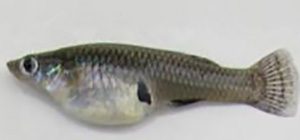
Using native animal species, particularly fish, to reduce mosquito populations is popular in multiple states including Florida. This 5-page fact sheet written by Eric Jon Cassiano, Jeffrey Hill, Quenton Tuckett, and Craig Watson and published by the Program in Fisheries and Aquatic Sciences within the UF/IFAS School of Forest Resources explains how to use eastern mosquitofish to control mosquitoes. It also discusses other native fish species that may reduce mosquito populations.
http://edis.ifas.ufl.edu/fa202
Dimorphic Jumper Maevia inclemens (Walckenaer 1837) (Arachnida: Araneae: Salticidae)
Maevia inclemens is a common jumping spider found in vines and ivy along tree lines throughout eastern North America. Learn about this interesting and possibly agriculturally beneficial spider in this 3-page fact sheet written by Laurel Lietzenmayer and Lisa Taylor and published by the UF/IFAS Department of Entomology and Nematology.
http://edis.ifas.ufl.edu/in1209
Dark Southern Drywood Termite (suggested common name) Kalotermes approximatus Snyder (Insecta: Isoptera: Kalotermitidae)
Dark southern drywood termites are classified as “an uncommon structural pest,” though some infestations have been recorded. Learn to identify this termite species and get information about its distribution, history, biology, and management in this 5-page fact sheet written by Joseph F. Velenovsky and Rudolf H. Scheffrahn and published by the UF/IFAS Department of Entomology and Nematology.
http://edis.ifas.ufl.edu/in1208
Streamlining Resiliency: Regulatory Considerations in Permitting Small-Scale Living Shorelines in Florida
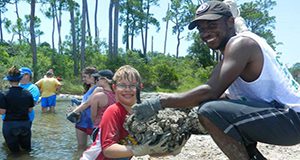
Living shorelines offer a valuable and environmentally friendly means of stabilizing shorelines while restoring and enhancing estuarine habitats. Because living shorelines are considered environmentally beneficial, several agencies have coordinated efforts to reduce the regulatory burden required to construct them. This 8-page fact sheet written by Thomas T. Ankersen, Alexandra Barshel, and Valerie Chesnut and published by the Florida Sea Grant College Program, UF/IFAS Extension, describes how to ensure that a living shoreline project will be successful and not run into any permitting difficulties.
http://edis.ifas.ufl.edu/sg155
Managing High Water Levels in Florida's Largest Lake: Lake Okeechobee
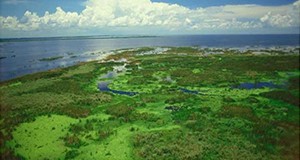
This 7-page fact sheet written by Karl E. Havens and published by the Florida Sea Grant College Program, UF/IFAS Extension, provides a history of Lake Okeechobee regulation schedules and an overview of the risks, constraints, and trade-offs that the US Army Corps of Engineers must consider when deciding to release flood water from the lake.
http://edis.ifas.ufl.edu/sg154
Biology and Control of Cogongrass (Imperata cylindrica) in Southern Forests
Cogongrass (Imperata cylindrica (L.) Beauv.) is a Southeast Asian warm-season perennial grass species that has spread to all continents except Antarctica. It is considered among the worst problematic weeds on a global scale. Control of cogongrass is difficult, especially in forests. This 6-page fact sheet written by Patrick J. Minogue, Brent V. Brodbeck, and James H. Miller and published by the UF/IFAS School of Forest Resources and Conservation presents recommendations for control strategies that will work in mixed pine-hardwood forests and pine forests.
http://edis.ifas.ufl.edu/fr411
How Likely Is a 100-Year Rainfall Event During the Next Ten Years?
This 4-page fact sheet describes proper interpretation of rainfall event probabilities and recurrence intervals, particularly as they are used by engineers and water resources managers in the design and construction of hydraulic structures, such as dams, levees, and canals. This article focuses on rainfall, but its explanations and concepts can be applied to other extreme hydrologic phenomena such as flood and drought. Written by Young Gu Her, William Lusher, and Kati Migliaccio, and published by the UF/IFAS Department of Agricultural and Biological Engineering, March 2018.
http://edis.ifas.ufl.edu/ae523
Living with the African Honey Bee
African honey bees and European honey bees are the same species of honey bee, but the two are classified as different subspecies or races of honey bee. African honey bee x European honey bee hybrids present an unpredictable combination of both subspecies‹ behavioral traits. This 4-page fact sheet written by J. D. Ellis and M. Bammer and published by the UF/IFAS Department of Entomology and Nematology explains how to “bee-proof” your house and yard and develop a bee safety plan as well as what you can do if you encounter a swarm or a colony of bees and how to treat a bee sting.
edis.ifas.ufl.edu/in1205
Swimmer's Itch (Cercarial Dermatitis)
Learn how to swim safely and avoid this itchy skin rash in this 3-page document written by Emma N. I. Weeks and Katherine Sayler and published by the UF/IFAS Department of Entomology and Nematology.
http://edis.ifas.ufl.edu/in1200
Cocoplum (Chrysobalanus icaco L.) Identification and Uses
Cocoplum is one of two native Florida plants in the Chrysobalanaceae family, and is found in a variety of habitats. This 9-page document discusses the identification and uses of cocoplum. Written by Stephen H. Brown and Marc S. Frank and published by the UF/IFAS Environmental Horticulture Department, March 2018.
http://edis.ifas.ufl.edu/ep553
Assessment-based Pest Management of German Cockroaches
Assessment-based pest management emphasizes the importance of evaluating the intensity of a pest problem before treating the problem. This 10-page fact sheet written by F.M. Oi, E. Weeks, J. Jonovich, and D. Miller and published by the UF/IFAS Entomology and Nematology Department explains the strategy and includes a decision flow chart to provide an easy-to-follow overview on how a German cockroach problem can be assessed and successfully managed with specific guidance for each of four levels described in the fact sheet. The levels described constitute an escalation protocol that may approximate the tiers in a LEED (Leadership in Energy and Environmental Design) pest-management plan and may meet the requirements of some “green” pest-management certification programs, depending on level.
http://edis.ifas.ufl.edu/in1190
